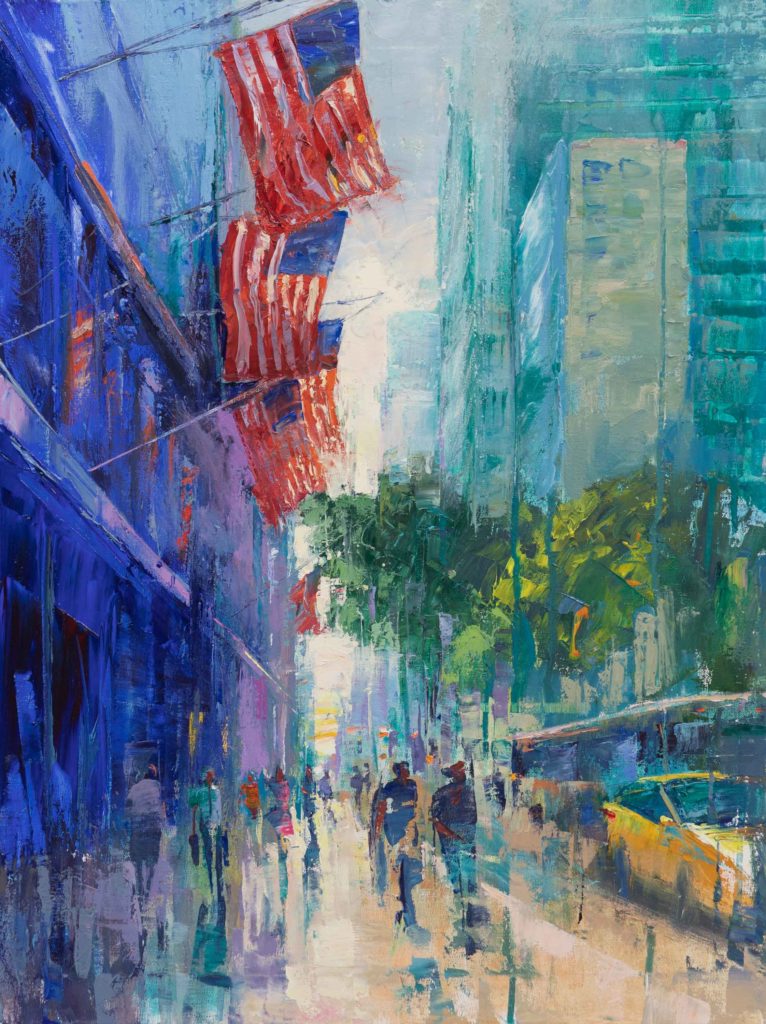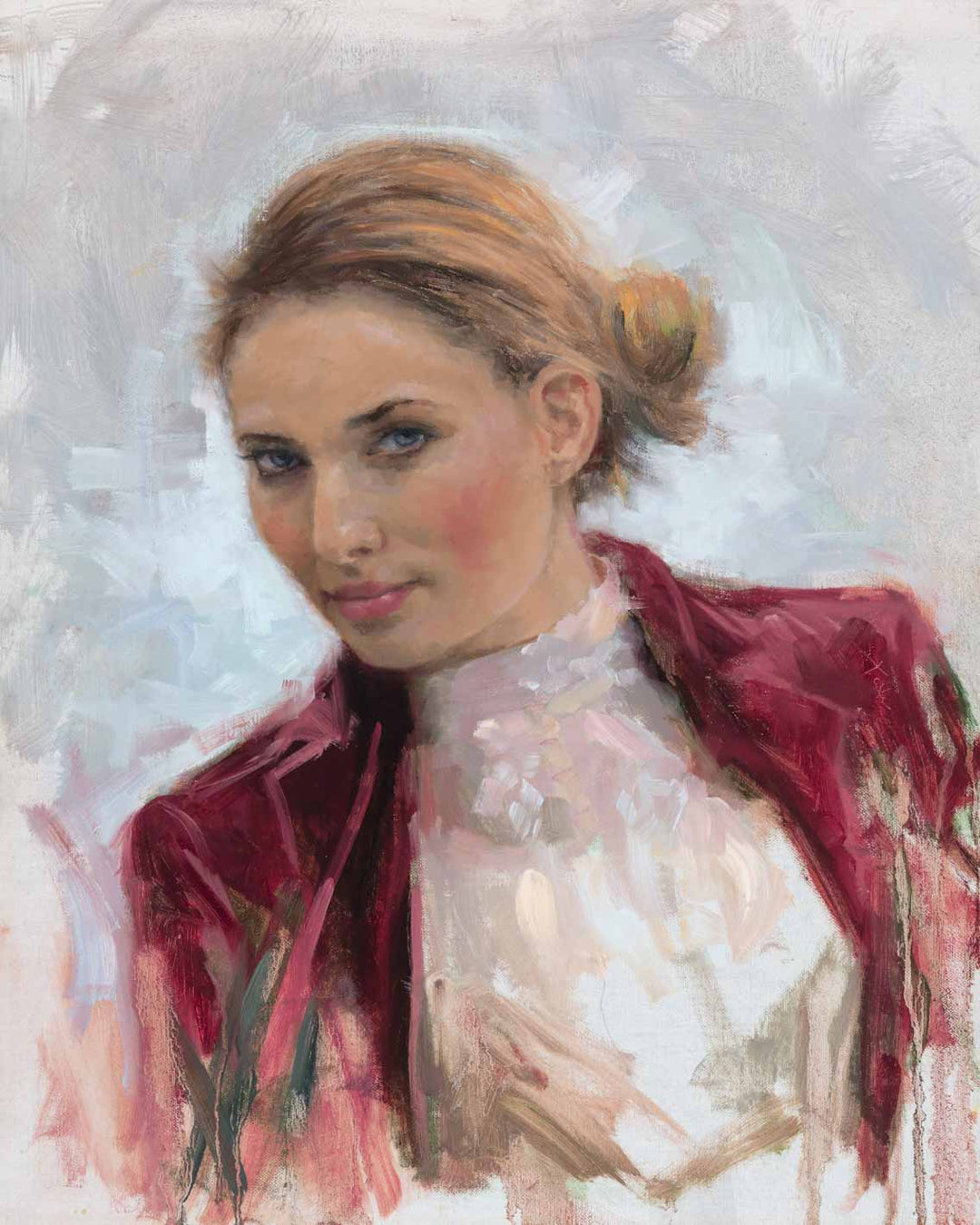Limited Edition Collector's Oil Paintings for Sale
Limited Edition Collector's Oil Paintings for Sale
Blog Article
Discovering All Concerning Oil Paints: An Overview to Recognizing Their Elegance and Worth
Oil paints have mesmerized audiences for centuries, providing a glimpse into the imaginative proficiency of different eras. Their rich history is linked with cutting-edge methods and extensive emotional expression. Comprehending the materials and methods behind these artworks can boost appreciation. In addition, the marketplace for oil paints offers opportunities for investors and collectors alike. As one explores this remarkable globe, the concern occurs: what makes an oil painting really valuable?
The History of Oil Paint: A Journey Through Time
Although oil painting has origins that go back to ancient times, it truly prospered throughout the Renaissance, when artists uncovered its adaptability and abundant color potential. Early examples can be mapped to the 7th century, with techniques advancing notably throughout cultures. The tool became noticeable in Northern Europe in the 15th century, particularly via the works of musicians like Jan van Eyck, who originated its use for in-depth realism and vivid shades. This duration marked a departure from tempera paints, enabling greater depth and structure. As oil paint spread, it influenced plenty of artists, bring about masterpieces by distinguished numbers such as Leonardo da Vinci and Rembrandt. The medium's legacy proceeds, forming the art world well right into modern-day times.
Understanding Oil Repaints: Materials and Techniques
As artists check out the globe of oil paints, they come across a varied variety of materials and techniques that define this tool. The key elements of oil paint include pigments, which supply shade, and drying oils, such as linseed, that bind the pigments and help with application. Different ingredients can modify the paint's structure and drying out time, enhancing adaptability. Strategies like glazing, where transparent layers are developed up, and impasto, which includes using thick paint, permit various visual effects. Additionally, using brushes, combination knives, and even fingers can create distinct appearances and coatings. Understanding these materials and techniques enables artists to completely share their creative thinking and attain the wanted influence in their art work.
The Duty of Shade in Oil Paints
Shade plays a pivotal duty in oil paints, influencing both visual allure and psychological resonance. Understanding color theory essentials, including the relationships between tones, can improve an artist's ability to share mood and atmosphere. Furthermore, mastering shade mixing strategies enables greater deepness and richness in a paint's combination.

Color Concept Essential
Understanding color theory is important for musicians dealing with oil paints, as it develops the foundation for creating visually appealing and unified structures. Color concept incorporates the research study of how shades connect, the shade wheel, and the partnerships between primary, second, and tertiary shades. Musicians use complementary colors to enhance contrasts and develop focal factors, while comparable shades advertise unity and cohesiveness within a piece. Additionally, the ideas of cool and cozy colors affect the assumption of depth and area in a painting. Comprehending these principles allows artists to manipulate color properly, assisting the viewer's eye and connecting their intended message. Proficiency of color concept ultimately enriches a musician's ability to communicate feelings and ideas with their job.
Emotional Effect of Shade
The emotional effect of shade in oil paints plays a crucial duty in exactly how visitors connect and view with artwork. Colors stimulate certain sensations and moods, affecting the viewer's emotional state. Warm shades like oranges and reds can develop a feeling of heat and power, while trendy tones such as blues and greens commonly evoke calmness or self-questioning. Artists purposefully select shade schemes to enhance narrative aspects, leading the audience's psychological trip. The saturation and comparison of shades even more enhance these impacts, drawing interest and producing emphasis. Eventually, the interplay of colors in oil paintings not just boosts their visual allure yet additionally offers as an effective medium for emotional expression, enriching the visitor's experience and analysis.
Color Mixing Techniques
While several aspects of oil painting contribute to the general structure, grasping shade blending methods is crucial for attaining wanted effects and depth. Shade blending can be come close to with different techniques, consisting of the subtractive and additive procedures. Additive mixing includes integrating colors of light, while subtractive mixing relies upon pigments, where colors blend to create brand-new tones. Musicians commonly use a restricted combination to create harmonious works, understanding the partnerships in between main, additional, and tertiary colors. Techniques such as glazing and scumbling additionally boost deepness and brightness. By skillfully mixing colors, an artist can evoke feelings, develop focal points, and achieve a feeling of realistic look, inevitably elevating the paint's visual and emotional effect.
Famous Oil Painters and Their Iconic Functions

Renowned for their mastery of shade and method, oil painters have developed some of one of the most well known artworks in background. Renowned musicians like Vincent van Gogh mesmerized target markets with his emotive brushwork in "Starry Evening," while Claude Monet's "Perception, Sunup" laid the foundation for Impressionism. Leonardo da Vinci's "Mona Lisa" continues to be a long-lasting symbol of creative wizard, showcasing his ability in catching human expression. Rembrandt's "The Night Watch" illustrates his innovative use of light and shadow. Various other notable figures consist of Pablo Picasso, that changed modern-day art with his vibrant trial and error in jobs like "Les Demoiselles d'Avignon," and Georgia O'Keeffe, whose vibrant representations of blossoms and landscapes assisted define American modernism. Each artist's unique design added greatly to the oil paint landscape.
Just how to Review the Top Quality of an Oil Paint
Evaluating the quality of an oil painting involves a cautious evaluation of craftsmanship methods, in addition to an analysis of color and structure. Observing brushwork, layering, and the application of paint can disclose the musician's ability degree. In addition, the interaction of shades and the total setup of components add substantially to the paint's visual worth.
Analyzing Workmanship Strategies
A thorough analysis of workmanship strategies is essential for determining the top quality of an oil paint. Critics must first check out the application of paint; thick, distinctive brushstrokes might suggest a proficient hand, while excessively uniform applications could indicate an absence of deepness. oil paintings for sale. The layering method is likewise important; the existence of glazes and differed density can improve brightness and complexity. In addition, the high quality of the materials made use of, such as the canvas and pigments, plays a substantial function in longevity and overall aesthetic. Interest to detail in components like edges and shifts in between colors shows the musician's dedication to their craft. Inevitably, these techniques add to the paint's emotional effect and market worth, functioning as indications of the musician's skill and intent
Analyzing Color and Structure
While reviewing the quality of an oil painting, one have to focus on the interplay of color and structure, as these components are fundamental to the artwork's general influence. Shade choices can evoke emotions and establish mood; consequently, the artist's combination should be examined for harmony and contrast. A healthy make-up directs the customer's eye and produces a sense of unity. Musicians typically employ strategies like the policy of thirds or leading lines to boost visual interest. Furthermore, the usage of light and darkness can add deepness, enhancing the three-dimensionality of the painting. Ultimately, a successful oil painting weds shade and make-up, involving the visitor and welcoming a much deeper admiration of the musician's vision and method.
Taking care of and Preserving Oil Paintings
Correct treatment and conservation of oil paintings is crucial for keeping their stability and durability. To secure these artworks, it is important to show them away from direct sunlight, which can create fading and staining. Keeping a secure setting with regulated temperature and humidity more help in protecting against damages. Cleaning up need to be done delicately utilizing a soft, dry towel, staying clear of any kind of extreme chemicals that could damage the paint or varnish. Routine assessments for indications of wear and tear, such as fracturing or flaking, are a good idea. When moving or saving oil paints, appropriate padding and framework are needed to avoid physical injury. Eventually, diligent care adds to the visual charm and value of oil paints in time.
The Marketplace for Oil Paintings: Spending and gathering
Comprehending the market characteristics for oil paints is necessary for investors and enthusiasts alike. The worth of these artworks is affected by different variables, including the musician's track record, historical significance, and present patterns. Collectors often look for pieces that reverberate personally while taking into consideration possible recognition in value. Public auctions and galleries offer as primary venues for trading, with prices varying based on need and rarity. Buying oil paints calls for research study right into the marketplace, as well as an understanding of credibility and provenance. In addition, arising artists might provide possibilities for substantial returns, while developed names can command high prices. Generally, a strategic approach to collecting can yield both aesthetic pleasure and financial rewards.

Frequently Asked Questions
What Are the Ecological Influences of Oil Paint Products?
The environmental effects of oil paint products consist of the release of volatile natural compounds (VOCs), dangerous waste generation, and resource extraction for pigments. These aspects add to contamination and eco-friendly degradation, increasing issues among ecologically conscious musicians and customers.
Just How Do Various Canvases Impact Oil Painting Results?
Various canvases affect oil paint results substantially. Appearance, absorbency, and surface top quality can modify paint application, drying out times, and shade vibrancy. Musicians usually pick specific canvases to accomplish wanted results and boost their imaginative expression.
Can Oil Paintings Be Recovered if Harmed?
If damaged, Oil paintings can indeed be restored. Specialist conservators make use of different methods to repair tears, tidy surface areas, and address discoloration, guaranteeing that the artwork retains its initial appeal and worth for future generations.
What Are the Indicators of an Original Oil Painting?
The indications of an initial oil paint consist of visible brush strokes, texture variants, and an unequal canvas weave (oil paintings for sale). Furthermore, authenticity may be validated with provenance, signatures, and the visibility of a varnish layer special to oil mediums
Just How Has Innovation Influenced Modern Oil Painting Techniques?
Modern technology has significantly affected modern-day oil painting strategies by presenting digital devices for planning, boosted products for appearance and long life, and on-line systems for selling and sharing art, thereby expanding musicians' imaginative opportunities and target market reach. Oil painting has roots that date back to old times, it absolutely prospered throughout the Renaissance, when musicians found its adaptability and abundant color potential. The emotional impact of shade in oil paints plays a crucial role in how visitors attach and perceive with art work. While numerous aspects of oil paint add to the general composition, mastering shade mixing techniques is essential for achieving wanted results and depth. Assessing the quality of an oil painting entails a mindful analysis of workmanship techniques, as well as an evaluation of color and composition. While examining the high quality of an oil paint, one need to concentrate on the interplay of color and structure, as these components are basic to the art get more info work's overall impact.
Report this page